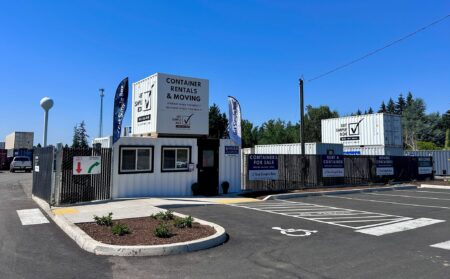When you’re buying a used or one-trip shipping container, you want to know what the container has been through. Similar to buying a car, it’s important to account for any possible damages or the extent that the box has been used so that you can ensure that your investment is solid.
Although each shipping container has its own story, the life of a shipping container along shipping lines is fairly uniform. Shipping containers were created to streamline the international shipping process, which means that shipping containers’ journeys across the sea are pretty much the same each time.
To better understand the life of your shipping container on the seas, here’s a look at how shipping lines work.
What is Liner Shipping?
Liner shipping refers to the process by which goods are mass transported overseas. It consists of scheduled service on fixed routes across the ocean that factories, retailers, and other companies rely upon to ship their goods. Liner shipping allows goods to be shipped with regularity, enabling companies to keep their goods stocked, even when it takes weeks for a shipment to arrive. Shipping lines are essential to keeping the globalized world running.What Happens During The Liner Shipping Process?
Liner shipping requires factories, distribution warehouses, customs, ports, and many other factors to work together in order to run smoothly. Therefore, it adheres to a strict step-by-step process.- A truck comes to the shipper (often a factory) to load the goods. Products are placed in a shipping container where they are secured and locked. It will mostly likely remain unopened until it arrives at its destination (unless it is flagged for search by customs).
- The entity sending the freight must ensure that all proper documentation is filed with customs prior to export.
- The shipping container will be delivered to a staging area where it will await shipment.
- The container is loaded onto a ship for transport.
- Prior to docking, the captain must provide the government of the country where it will dock with proper documentation of cargo.
- Once docked, the ship will be unloaded using cranes and the labor of dozens of dock workers.
- Certain containers may be chosen for random search at this point.
- After inspection, the shipping container will be loaded onto a truck and taken to a distribution center, which is most likely close to the port. The goods will be unloaded sorted for delivery to their final destinations.
Rail freight
The shipping process for goods sent by rail is very similar to those shipped overseas. The main difference between the two is that rail freight is primarily used for domestic transport, so there’s rarely need for customs.Rail Freight
The shipping process for goods sent by rail is very similar to those shipped overseas. The main difference between the two is that rail freight is primarily used for domestic transport, so there’s rarely need for customs. Rail freight is often the preferred shipping method when possible because it offers more flexible schedules, and its cheaper than shipping overseas. However, depending on where the goods come from, this option isn’t always available. Rail freight often uses the same shipping container type as maritime shipments (intermodal containers, which usually come in 20-foot and 40-foot varieties), but they sometimes use Domestic Containers, which can have a variety of specifications depending on the policies of the local government.Can I trust my used Shipping Container?
The streamlined liner shipping process means that the containers themselves see some wear and tear—mostly from inclement weather—but this wear and tear is minimized. However, it’s natural to wonder how much of an effect its journeys over the sea have on the box. The answer to the question will depend on the individual box’s life, but there are a few things that you can count on when purchasing a used intermodal container. Since the intermodal containers are used for international shipment, they must adhere to strict international standards. They are manufactured per guidelines instituted by the International Organization for Standardization. This means that every shipping container that travels overseas must pass strict guidelines. Therefore, you can feel comfortable knowing that, although your used shipping container has seen some miles, it is built for optimal performance.Share:
Related Posts
How to Get the Best Deal on a Shipping Container Ever wondered if you’re really getting the best deal on
40 Foot Container Rentals: Costs, Sizes, and Tips (2025 Edition) The 40 foot shipping container is the largest and most
School Storage Made Simple with 20-Foot and 40-Foot Shipping Containers As another school year begins, space planning becomes critical—whether schools
Get Simple Box Expands Salem Yard to Better Serve Local Moving and Storage Needs Salem, OR — Get Simple Box
How to Get the Best Deal on a Shipping Container If you’re searching for portable storage containers in Glendale, AZ,





